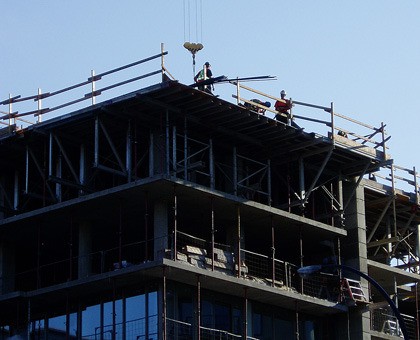Residential property assessments are up slightly across most of B.C., with dips in average values in the Okanagan and on Vancouver Island.
The biggest increases were in the Northwest and Peace River regions, where total residential value rose about 10 per cent as natural gas and other industrial development picks up speed.
The B.C. Assessment Authority released its 2014 property assessment rolls Thursday, showing continued slight growth in total property values in most regions of B.C. The value of all property in B.C. rose 1.27 per cent, despite declines in most regions for farm, recreational and managed forest land.
Assessments for regions and individual properties are available here, where property owners can find information on appealing their assessment for property tax purposes.
In the Lower Mainland, most residential values showed modest increases, from almost flat on the North Shore to 1.61 per cent in Vancouver, 0.68 in North Fraser, 1.98 per cent in Surrey-White Rock and 1.53 per cent in the Fraser Valley. Richmond-Delta recorded the only decline in the region, with residential total value down 0.15 per cent.
In Southern Vancouver Island, total residential property value fell 2.69 per cent, with similar decreases for recreational and farm property. Business property is up 3.89, and major industrial property jumped 17.45 per cent.
Central Vancouver Island residential property slipped 1.31 per cent, with similar decreases in industrial, recreational and farm property and a 2.67 per cent rise in business property. The Courtenay region saw residential values hold steady, with business property up 3.36 and farm and recreational values down two per cent.
Penticton region residential property is down 0.94 per cent, with a similar dip in farm value. Kelowna also had about a one per cent drop in farm value, with residential value steady compared to 2013. The Vernon region saw a 1.57 per cent drop in residential value and a 1.95 per cent dip in farm value.
Residential property value was up 1.21 per cent in the Nelson-Trail region, up 1.31 per cent in the East Kootenay and up 0.76 per cent in the Kamloops region.
Residential value held steady in the Cariboo region, with declines recorded in industrial, farm and forest land.
The largest moves in the 2014 assessment roll were for managed forest land, which showed a jump of 15.3 per cent in the Fraser Valley and drops of 10 per cent or more in other regions.
Rod Bealing, executive director of the Private Forest Landowners Association, said the value reflects fluctuations in the price of logs, with property value lagging the timber market by several years.
